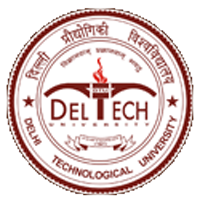Please use this identifier to cite or link to this item:
http://dspace.dtu.ac.in:8080/jspui/handle/repository/21354| Title: | ENHANCING PRODUCTIVITY AND RISK MANAGEMENT IN VEGETATION MANAGEMENT USING AI AND ML |
| Authors: | BINDAL, SNEHANSHU |
| Keywords: | RISK MANAGEMENT VEGETATION MANAGEMENT UX DESIGN AI ML |
| Issue Date: | Aug-2024 |
| Series/Report no.: | TD-7777; |
| Abstract: | Vegetation management is an important task in the energy sector that is concerned with ensuring the safety and reliability of power supply by maintaining clearance around power lines. However, vegetation management suffers from challenges such as low productivity, lack of real-time data, and inadequate risk management. This dissertation seeks to address these challenges by using technology and indicators to improve vegetation management productivity and risk management. This dissertation explores the UX design challenges faced by vegetation management in the energy sector. The research delves into the users, their goals, and the company's objectives, aiming to identify the pain points in the current design and propose potential solutions. The study was based on a live project that I was working on during my internship, where I analyzed work processes, identified gaps and proposed solutions. The study employs a qualitative research approach, using semi-structured interviews and observations with users and stakeholders to gather data. It was discovered that technology, like smart dashboards, make it easier for contractors to record and track work progress, and for managers to monitor and assign tasks on the go; it was found to be potentially more productive. Additionally, metrics such as percentage of work scheduled, trees cut, distance from the poles, hours logged, and budgets provide real-time insight into the progress and performance of vegetation management tasks. This paper proposes a task-centric approach that emphasizes task completion and risk mitigation. This approach involves using real-time data to identify high-risk areas, prioritize work, and allocate more budget and resources to mitigate those risks and provides a comprehensive view of your vegetation management operations and enables effective decision making. 5 Based on the themes identified, visual explorations were conducted to create potential design solutions that addressed the identified pain points. These explorations included wireframes, prototypes, and mockups that incorporated user feedback and iterative design practices. The results of this dissertation provide valuable insights into the UX design challenges faced by IVMS and offer potential solutions to improve the user experience of the products. This research contributes to the field of UX design by presenting a case study of a technology company in the energy sector and the unique challenges they face in providing AI-powered solutions for vegetation management. Overall, the results of this paper highlight the potential of technologies and indicators to improve productivity and risk management in vegetation management. The proposed solution will help vegetation management companies optimize operations, reduce risk and improve power supply reliability. |
| URI: | http://dspace.dtu.ac.in:8080/jspui/handle/repository/21354 |
| Appears in Collections: | M.Des. |
Files in This Item:
| File | Description | Size | Format | |
|---|---|---|---|---|
| SNEHANSHU BINDAL M.Des..pdf | 5.69 MB | Adobe PDF | View/Open |
Items in DSpace are protected by copyright, with all rights reserved, unless otherwise indicated.



